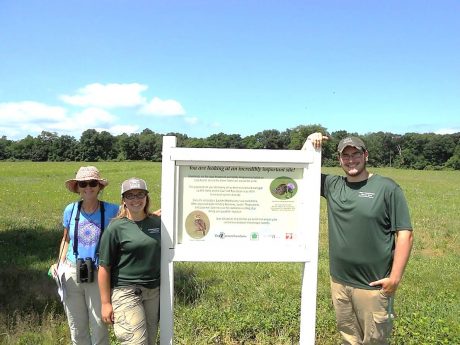Grassland Restoration at Caumsett State Historic Park Preserve
This article was written by Victoria O’Neill, Long Island Sound Study Habitat Restoration Coordinator at New York State Department of Environmental Conservation/New England Interstate Water Pollution Control Commission.

Caumsett State Historic Park Preserve, part of the Lloyd Neck Long Island Sound Stewardship Area, sits on a peninsula on Long Island Sound and has tidal wetland, grassland, forest, bluff, and beach habitats throughout the park. A 25-acre field that was historically used as pastureland was being maintained by New York State Parks as a successional field. An old hedgerow bisected the site, diminishing the value of the existing grassland habitat through fragmentation. Areas of the fields had become dominated by woody and invasive plants. As part of the restoration effort, invasive plants, such as black locust, mile-a-minute, porcelain berry, and mugwort, the hedgerow, and the woody plants were removed. These efforts created a contiguous grassland habitat, which provides greater habitat value to grassland dependent species.
Once the invasives were controlled, native grasses and wildflowers were planted in spring 2015, including coastal switchgrass, black eyed susan, and little blue stem. A mowing regime is part of the park’s management of the site and will encourage long-term success of the project.
Additional project details are available in the habitat restoration database. Partial funding for this project was through the Long Island Sound Futures Fund.